Up to My Eyeballs in Lawngrasses
It seems like every other question the past month or so has been about a lawn that has turned brown or one that is well on its way. No one’s turfgrass seems to be spared. And some of the problems are resurrections from way back in the past, while others are things I really don’t see very often. I’ll post some photos and we’ll chat to see if they’ll help you.
Quite possibly white grub worms…
When I first worked for the Texas Agricultural Extension Service (now Texas AgriLife Extension) of Texas A&M back in the 70’s there was an epidemic outbreak of white grub worms across much of North Central Texas (and probably elsewhere). Entire city blocks of lawns were being lost. I wrote about that recently here.
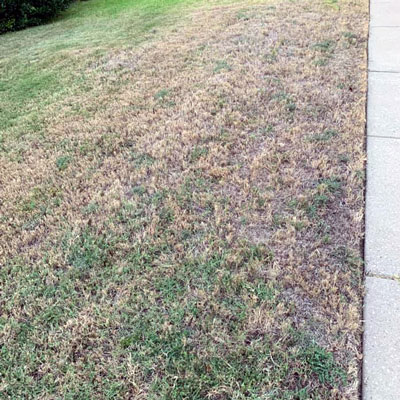
I’m beginning to wonder about that kind of damage this year for the first time in a while. These photos have been posted to my Facebook page recently, and each homeowner reported that the dead grass was resting lifeless on top of the soil without any apparent roots – just like a piece of old carpet. However, the really telling sign is to dig square-foot samples of soil in several locations around the outer edge of the dead grass. If you find 5 or more white grubs per square foot, you can pretty well assume they’re you’re culprits.
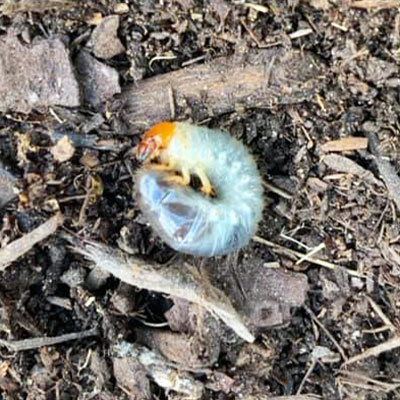
Dr. Mike Merchant, urban Extension entomologist in the DFW area, offered these comments to me earlier this week:
“We have two good insecticides: granular lawn products containing imidacloprid or chlorantraniliprole (Scott’s Grub-Ex). Both are good and can still be applied. Our recommendation to anyone with grub problems this year is to plan on treating again next year. Anecdotal, but it seems that grubs often attack the same yards over and over again.
Follow label directions, but be sure to water the granules in with at least 1/2 inch of water after application.”
Bermuda diseases…
I’ve had several photos of bermuda lawns that don’t look like damage of white grub worms posted to my Facebook page. I asked for an opinion of Dr. Kevin Ong, one of Texas finest Extension plant pathologists and a longtime friend of mine (as is Mike Merchant).
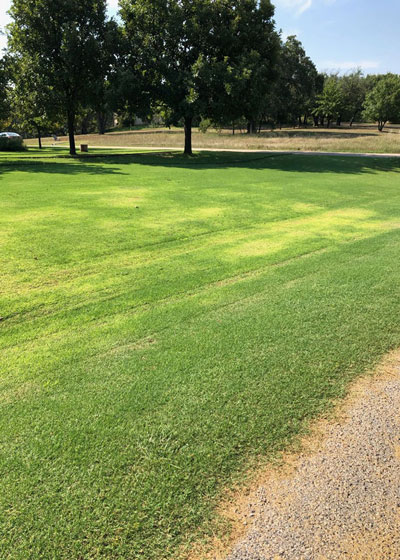
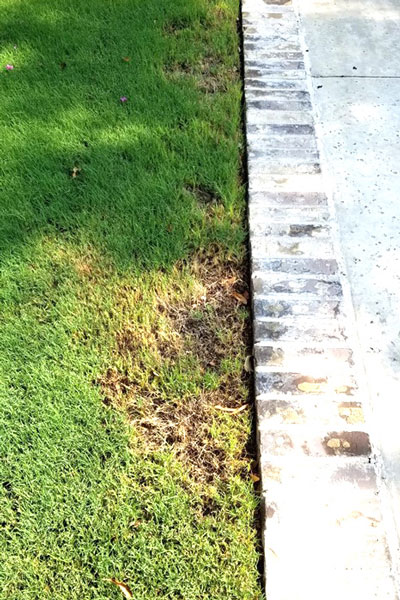
I had felt that some of the bermuda issues might be Pythium, but Kevin introduced the possibility of Curvularia and Guamannomyces.
Folks, I’m out of my league on these and my recommendation is going to settle back to default. If you have a bermuda issue, and if you’ve ruled out grub worms as the cause, you need to send a sample to the Texas Plant Disease Diagnostic Laboratory at Texas A&M right away. The differences are too subtle for me to describe. They need to culture your sample and give you better help than I can.
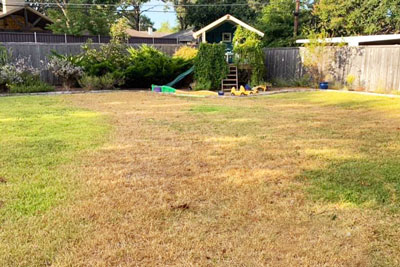
Chinch bugs in St. Augustine…
Until early this week it had continued hot and dry over almost all of Texas. Chinch bugs had remained active. They still will be in Southwest Texas, but obviously with all the rain in Southeast and East Texas, chinch bug season is over in those areas.
However, just to have put it in writing, when it’s sunny and hot, you’ll still be able to see them moving actively on the soil’s surface down near the runners. They’re BB-sized and black with irregular white diamonds on their backs. They’ll always be in sunny parts of your yard, and you’ll find them at the edges of the dying grass, not where they have already killed the St. Augustine.
Nurseries and hardware stores have several products labeled for their control. If you find them, it is definitely still worth treating for them.
